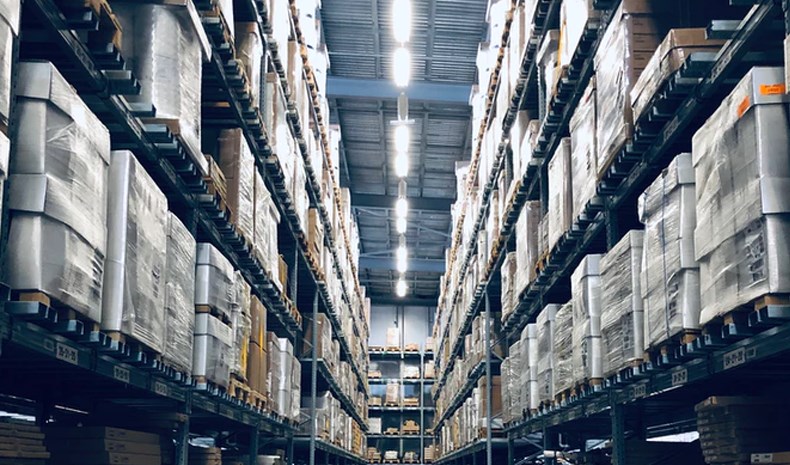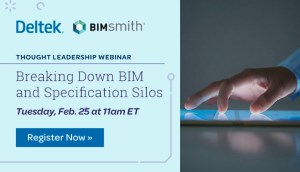Two-day shipping is everywhere.
Or, to be more specific, free two-day shipping is everywhere.
The delivery expectations of consumers around the world are wildly different today than they were just a few short years ago, largely due to the phenomenal growth of Amazon Prime and its delivery on the promise of two-day shipping on millions of items for its members.
What began as a premium offering through Amazon has seeped into the marketplace as a target to be met by any e-commerce retailer that hopes to remain relevant. From Walmart’s two-day shipping with no membership fee to free pickup from similar existing brick-and-mortar stores, the retail industry has not been riding Amazon’s coattails so much as hanging onto them for dear life.
"The retail industry has not been riding Amazon’s coattails so much as hanging onto them for dear life."
While the retail sector has not stopped at two-day shipping (Amazon’s one-day and same-day shipping are pushing the envelope even further), the trend has had a profound effect on our lives: an expectation that shipping of any kind from any company be both free and within two days.
This includes even less traditional items placed in the mail: documents, forms, rebates, and yes: samples.
Despite being one of the most essential touchpoints that a manufacturer has with a prospect, many brands still struggle to get samples to a prospect within two days - and many take significantly longer.
Looking at some compelling data from the marketplace today, it is becoming clear that fast, free, and reliable two-day shipping for building material samples is no longer a luxury, but a requirement. Here's why.

1. Sample Fulfillment Needs to Be Fast
Where better to look for insight into the effects of fast shipping than the leading innovator in fulfillment itself: Amazon.
A 2015-2019 study of Amazon conversion data found that when products moved from standard shipping to 1-2 day shipping, they experienced more than a 10% increase in various aspects of customer purchase behavior.1
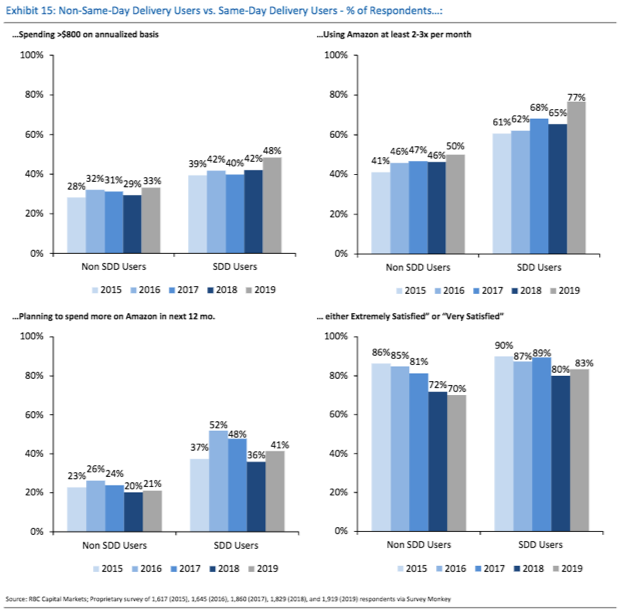
The results of the study reveal several things about fast shipping.
- – First, customers spent more. In the study, 48% of customers who were given premium delivery options* reported an annual Amazon spend of over $800, vs. only 33% of those with longer delivery times.1
- – Second, customers spent more frequently. 77% of Amazon customers who were given premium delivery options* said they used Amazon at least 2-3 times a month, vs. only 50% for customers with longer delivery options.1
- – Third, customers spent more loyally. Amazon customers who were given premium delivery options* had a measurably higher intent to spend additional money on Amazon in the next twelve months and had a significantly higher degree of purchase satisfaction.1
*In this study, the object of reference was same-day shipping
“But That's E-Commerce - These Are Just Samples”
Not anymore.
As the internet has pervaded every corner of modern culture, so has self-service. A prospect may find your website, research your products, order a sample, and make a large purchase without ever speaking to a person. If your customer is interacting with you online in order to receive something in the mail, that's e-commerce.
It's also important to realize that your customers don’t particularly care if you consider your samples to be “e-commerce.” If they've placed a request, they expect it to be fulfilled in what they consider to be a timely manner.
A recent industry study reported that an enormous 84% of consumers say that they won’t return to a brand after just one poor delivery experience.1 The simple truth is that it doesn’t matter what your brand is shipping - consumers want to have a pleasant ordering and shipping experience. If they don't, they may never come back.
84% of consumers say that they won’t return to a brand after just one poor delivery experience
Therefore, whether you like it or not, the reality must be accepted that sample fulfillment is e-commerce. And that brings with it expectations.
In the case of sample fulfillment, if a prospect requests a sample from your sales team and it arrives after any length of time beyond their expectations (whatever they may be), your brand has suffered damage. The result to the consumer is potentially as harmful as speaking with a rude customer service representative, finding a billing mistake, or receiving an incorrect order. Brands are fueled by positive perception and destroyed by negative perception.
That’s why it’s essential to categorize sample fulfillment not as an operational expense but as a strategic investment in customer service.
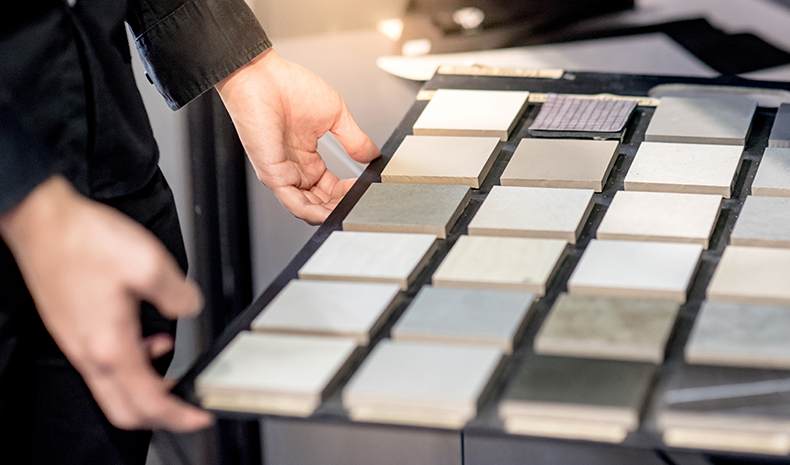
2. Sample Fulfillment Needs to Be Free
Consumers don’t just care that their orders are delivered quickly - they expect it to be done for free.
A series of related studies found the following:
- – 47% of consumers hold both fast shipping and free shipping as equally important to the buying process3
- – 39% of consumers expect two-day shipping to be free4
- – 29% have backed out of a purchase because two-day shipping wasn’t free4
- – 65% of consumers say they look up free-shipping thresholds before adding items to their online shopping carts4
- – The maximum number of days people are willing to wait for an item to be delivered in exchange for free shipping decreased between 2012 and 2018 from 5.5 days to 4.1 days5
In the construction industry, charging a prospect for a product sample is one of the worst things you can do. For some (especially those about to specify tens or hundreds of thousands of dollars' worth of your product in a project), it feels like a slap in the face. To others, it's just not an option (they may not even have a company credit card) and immediately removes you from consideration for the specification.
Your samples should fast, and they should absolutely be free.
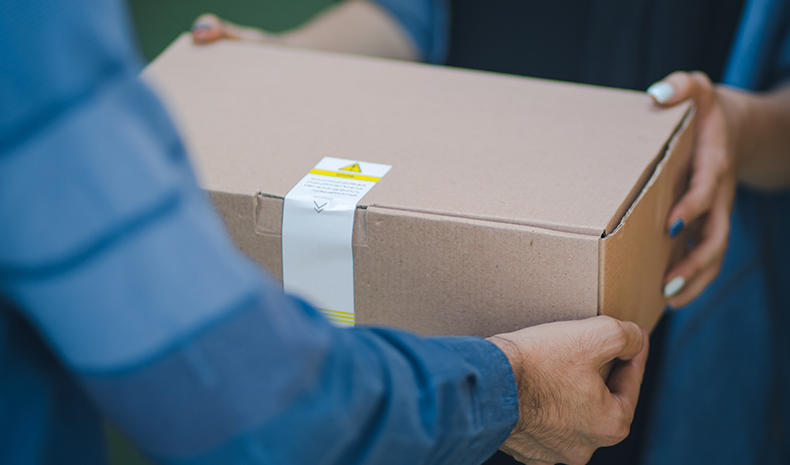
3. Sample Fulfillment Needs to Be Reliable
In the design community, deadlines are everything.
Design firms work for clients who not only are wielding large amounts of cash, but inevitably have high expectations for their projects. This results in multiple rounds of revisions and deadlines that are constantly being pushed around. When an architect or designer requests a product sample from a manufacturer, the odds of them operating under a flexible timeline is next to nothing. In most cases, the need is nothing short of urgent.
That's why it's essential to communicate upfront that the designer's deadline is your biggest concern. If you don't, or fast shipping is not available, you may have already lost the spec – regardless of how interested the prospect is.
“Even your biggest fans will abandon shopping carts if shipping doesn’t align with their needs.” 3
-Jake Rheude, Red Stag Fulfillment
If a simple sample request takes four, five, or even six days to arrive, the consequences could be significant for your brand. As a designer, here are the options when a sample does not arrive in a timely manner:
- 1. They can choose an alternative brand whose sample is available more quickly
- 2. They can forget the spec and leave it to someone else to decide further downstream
- 3. They can experience a frustrating delay in design approvals while the sample is [hopefully] in transit
In all three of the above scenarios, your brand has the potential to experience significant brand damage due to a lack of timely delivery. On the other hand, if you deliver a request not only quickly, but surprisingly quickly, it leaves an impression. Fast shipping covers a multitude of sins.
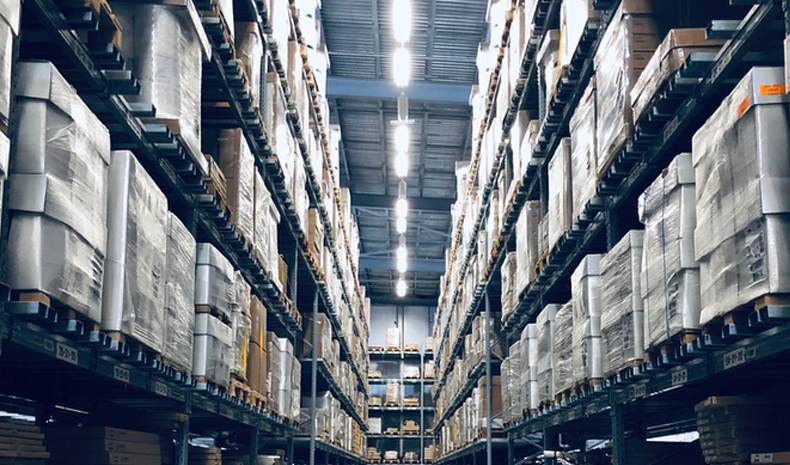
How to Optimize Your Sample Fulfillment for Two-Day Shipping
So if your sample program is not currently fast, free, and reliable, what can you do to get things on track?
At Swatchbox, we specialize in helping building material companies craft exceptional sample experiences for architects, designers, and other construction professionals. From our own years of experience, if you’re looking to make the jump to two-day shipping for your sample program, here’s what you’ll need to do:
- 1. Streamline Your Inventory - Asking “the guys down in the warehouse” to get you a sample won’t cut it. Maintaining a consistent inventory of shipping-ready samples is a requirement to fulfill requests quickly.
- 2. Dedicate Resources - Running an effective sample program takes time, money, and personnel. Dedicating one person to the task isn’t enough. (Opinion: If one person can handle your brand’s entire sample volume, you might need to look into the effectiveness of your marketing instead.)
- 3. Incorporate the Marketing Department - Too many brands place sample fulfillment under their Sales or Warehouse teams. Both groups have skills and obligations that make samples the least of their concerns. The warehouse team likely has the least concern about the excellence of your sample program. Their performance is judged by other metrics. Your sales team has a vested interest in getting samples out to prospects, but they are unlikely to be equipped to fulfill them effectively, whether due to proximity, time, or both. At the end of the day, sample fulfillment is a brand experience and therefore should be under the close, dedicated supervision of the people who know and care the most for the proper representation of the brand: the marketing team.
- 4. Form Partnerships - Packaging, warehousing, and shipping is expensive. Forming B2B partnerships with key industry players like UPS, FedEx, USPS, as well as any number of software providers, are necessary to make your sample program an efficient machine instead of a gluttonous cost center.
- 5. Capitalize on Leads - At the end of the day, performing all of the above steps only makes a sample program half effective. The real outcome of an excellent sample program is creating and converting leads. It’s difficult to do this if you don’t have an organized process for collecting prospects’ information, disseminating it to the appropriate sales team members, and following up after the request.
Performing all of the above with excellence can be daunting for many brands with limited time and resources. That’s why we started Swatchbox – to make it easy for building material companies to operate best-in-class sample programs. Swatchbox takes care of each step in the sample process:
- – Sample Strategy
– Sample Inventory - – Sample Fulfillment
- – Custom Packaging
- – E-commerce website ordering
- – Analytics and Lead Tracking
Swatchbox brings every step of the sampling process into one central location. If this seems to fit a need for your brand, please reach out.
Otherwise, if you haven’t already, the time to follow the above steps is now. Samples carry a greater risk/reward opportunity than potentially any other touchpoint during a customer’s journey - don’t let it go to waste.
--
Ethan Adams
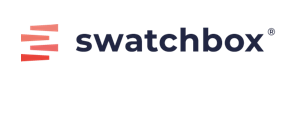 Swatchbox is a premier sample fulfillment service that connects design professionals with building product manufacturers. With proprietary software designed by insiders of the design community, Swatchbox helps manufacturers improve product sales and brand affinity by delivering material samples to the design community with speed, intelligence, and style. Learn more and join Swatchbox at www.swatchbox.com.
Swatchbox is a premier sample fulfillment service that connects design professionals with building product manufacturers. With proprietary software designed by insiders of the design community, Swatchbox helps manufacturers improve product sales and brand affinity by delivering material samples to the design community with speed, intelligence, and style. Learn more and join Swatchbox at www.swatchbox.com.
Key Data Sources:
1https://www.cnbc.com/2019/06/21/amazon-one-day-shipping-for-prime-members-increases-spend-loyalty.html
2https://www.getconvey.com/resource/research-last-mile-delivery-save-retail
3https://www.xsellco.com/resources/e-commerce-fulfillment-amazon/
4https://nrf.com/media-center/press-releases/nrf-study-says-more-online-shoppers-want-free-shipping
4https://retailwire.com/discussion/should-retailers-lower-expectations-around-last-mile-delivery/



